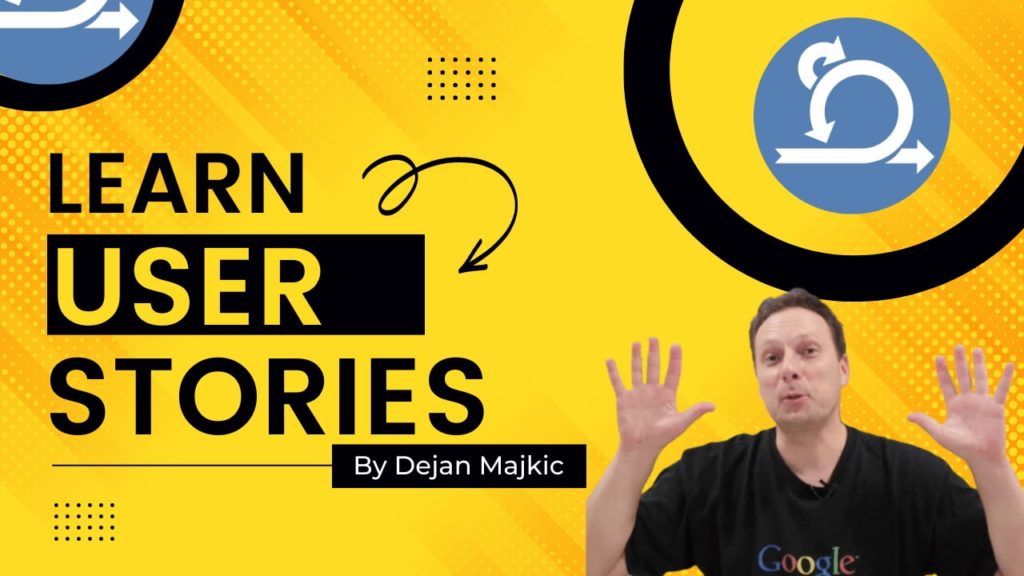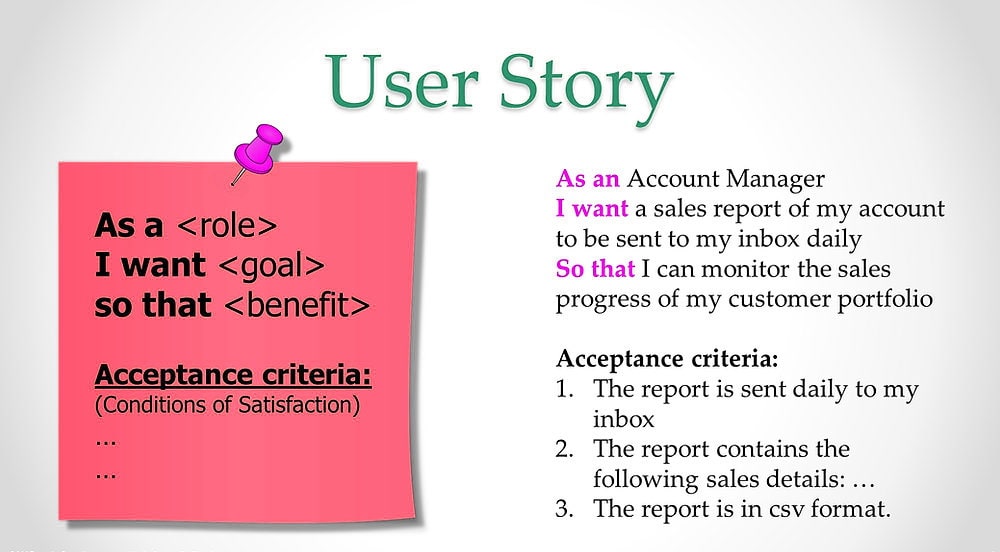User Story and Acceptance Criteria: Examples, and DIY Implementation

Introduction
Welcome to the user story and acceptance criteria powerful world. Discover how these essential tools can enhance collaboration, prioritize tasks, and deliver customer-centric products.
To make things even more exciting, we’ve included an interactive User Story Generator that allows you to explore and unleash your creativity in crafting user stories online.
What is the User Story?
User stories play a crucial role in Agile development as they capture the essence of user requirements and serve as a communication tool between the development team and stakeholders.
These concise narratives focus on the “who,” “what,” and “why” of a feature or functionality, enabling teams to understand user needs, prioritize work, and deliver value.
By emphasizing user-centricity and outcomes, user stories help foster collaboration, guide development efforts, and ensure the development of products that meet customer expectations.
Their simplicity and flexibility make them an essential component of Agile methodologies, empowering teams to deliver incremental and customer-focused solutions. Click here for more info.

What are the acceptance criteria?
Acceptance criteria are a critical aspect of Agile development, providing a clear definition of done for user stories. These criteria outline specific conditions that must be met for a user story to be considered complete and ready for release. By defining the expected outcomes and behaviors, acceptance criteria serve as a guide for developers, testers, and stakeholders to validate the functionality of a product. They ensure that the implemented features meet the desired quality standards and align with user expectations.
By incorporating acceptance criteria into the development process, teams can enhance clarity, reduce ambiguity, and facilitate effective collaboration between all stakeholders.
Ultimately, well-defined acceptance criteria contribute to the delivery of high-quality software that meets the needs and requirements of end-users.
User Story and Acceptance Criteria Example
Here are 5 examples of user stories along with their acceptance criteria:
User Story 1: As a registered user, I want to be able to update my profile picture so that I can personalize my online presence.
Acceptance Criteria:
- Given that I am logged in when I navigate to the profile settings page, I should see an option to upload a new profile picture.
- When I select a new image file and click the “Save” button, my profile picture should be updated with the new image.
- Then, when I visit my profile page, I should see my updated profile picture displayed.
User Story 2: As a customer, I want to add products to my shopping cart and place an order online for a seamless shopping experience.
Acceptance Criteria:
- Given that I am browsing the product catalog, when I click on a product, it should be added to my shopping cart.
- When I navigate to the shopping cart page, I should see a list of all the products I have added.
- Then, when I proceed to the checkout process and provide the necessary shipping and payment information, I should be able to successfully place the order.
User Story 3: As a project manager, I want to generate detailed project reports automatically to track progress and communicate with stakeholders.
Acceptance Criteria:
- Given that I am logged in as a project manager when I access the project dashboard, I should see an option to generate a project report.
- When I select the desired report parameters (e.g., date range, project scope), a comprehensive report should be generated with key metrics, tasks, milestones, and progress status.
- Then, the report should be available for download in a PDF or Excel format.
User Story 4: As a social media user, I want to be able to share posts and interact with other users’ content to engage with the community.
Acceptance Criteria:
- Given that I am logged in to my social media account when I view a post, I should see options to like, comment, and share the post.
- When I click the “Share” button, I should be able to choose the desired sharing method (e.g., on my timeline, in a private message).
- Then, the shared post should appear on the designated platform, and other users should be able to see and interact with it.
User Story 5: As a customer support representative, I want to access a knowledge base to quickly find answers to frequently asked questions and provide timely assistance to customers.
Acceptance Criteria:
- Given that I am logged in as a support representative when I navigate to the knowledge base section, I should see a search bar and categories to browse.
- When I enter a search query or select a category, relevant articles and solutions should be displayed.
- Then, I should be able to access detailed information, including step-by-step instructions, troubleshooting tips, and related resources, to assist customers effectively.
How would you like to play around with our User Story and Acceptance Criteria Generator below?
User Story and Acceptance Criteria Generator
User Story
Please add a brief description of the type of user, the tasks they need to perform, and the goals they want to achieve. Keep it concise and specific.
Example: As a website visitor, I want to be able to create an account so that I can access exclusive features and personalize my experience.
Hint
Acceptance Criteria
Please provide the given context, the action that triggers the criteria, and the expected observable outcomes. Be specific and clear.
Example: Given that I am on the login page, when I enter valid credentials and click the "Login" button, then I should be redirected to the dashboard page and see my personalized content.
Hint
Your User Story:
Join the ‘Communication and User Requirements’ Course
Welcome to the “Communication and User Requirements” course, a journey that will transform you into a master of user requirements and effective communication in Agile product development (including User story and acceptance criteria). This course is your gateway to creating products that not only users will fall in love with, but also make businesses thrive.
What You Will Learn?
Imagine being able to minimize project failure, accelerate project delivery, and boost product success rates. Picture yourself elevating requirements quality, fostering stakeholder engagement, and enhancing usability and user satisfaction. This course will equip you with the skills to do all that and more.
You will dive into the world of user requirements, learning about different types, from business to functional, and the techniques for gathering them. You will master the art of requirement prioritization and learn how to express requirements effectively. You will also learn how to manage changing requirements and control scope, all while dealing with client interactions and vague client requests.
But that’s not all. You will also get a taste of the Agile software development process, learning about user-centered design principles, product backlog refinement, and sprint execution.
Our Guarantee
And the best part? This course comes with a 30-day 100% money-back guarantee. If you’re not satisfied within the first 30 days, you can request a full refund. So, what are you waiting for? Embark on this journey and transform your career today!
